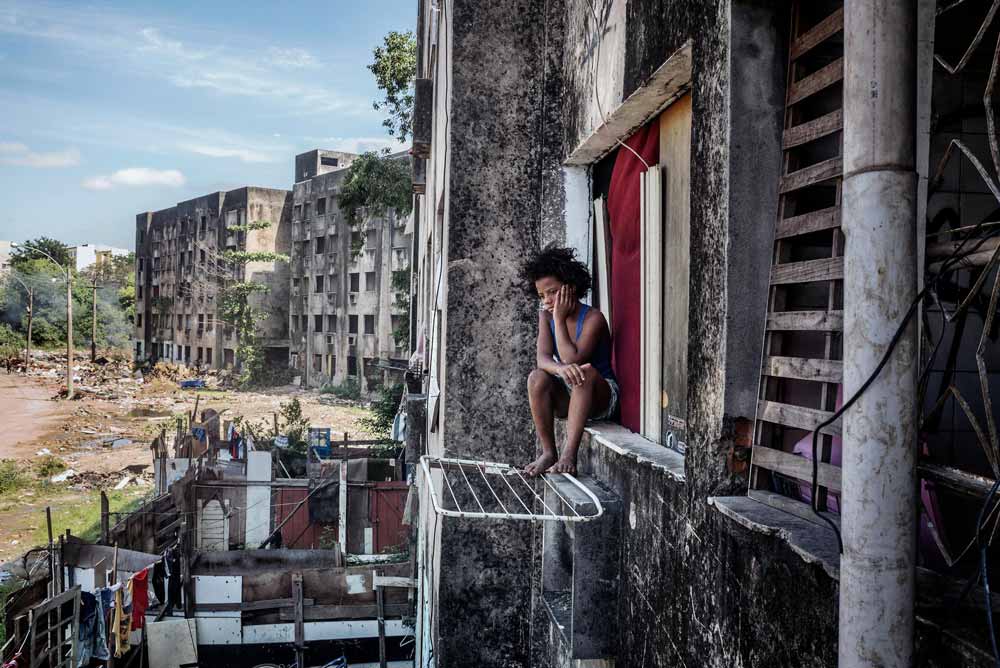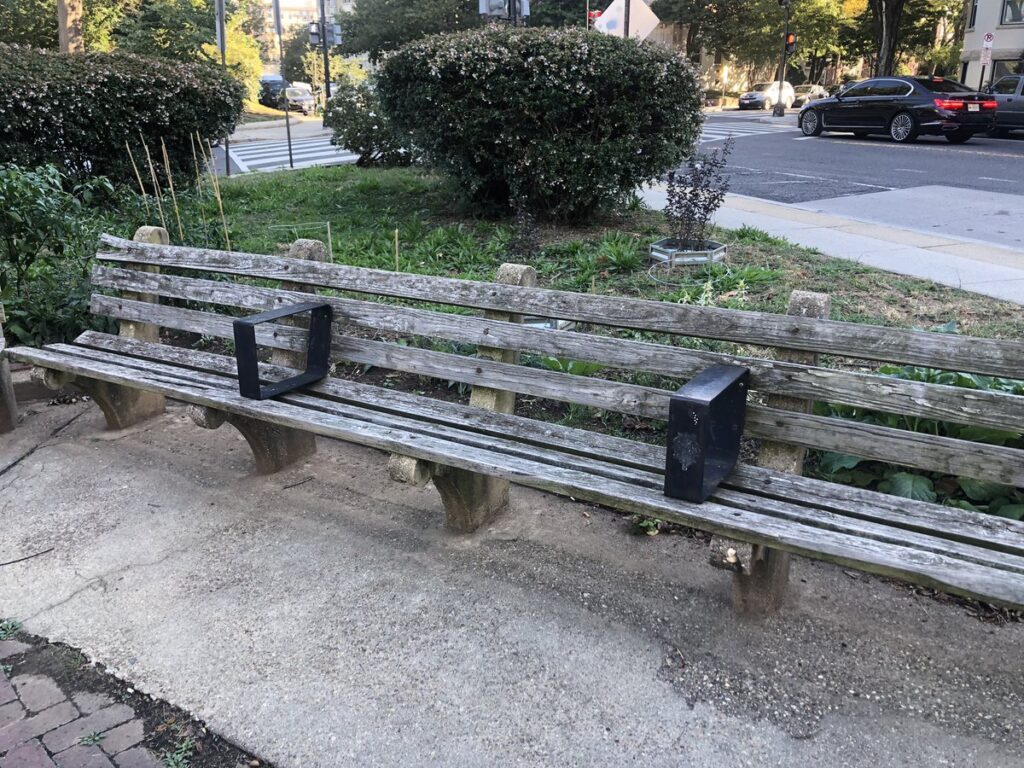Photographer and documentarian Peter Bauza spent the better part of a year with families surviving in the unfinished buildings and dark corridors of Campo Grande, a large neighborhood on the western outskirts of the Brazilian state Rio de Janeiro. More than 1,000 people were living this way at the time.
From June 2015 to August 2016, Bauza alternated staying with these people “Sem Teto, Sem Terra” — without roof or land — and in a small hotel nearby. The families are squatters in a decrepit middle-class housing development, Jambalaya, that was never completed. Some of the residents call it Copacabana Palace, a juxtaposition with the luxury hotel on the eastern side of Rio, where rooms start at $485 per night. (1,579.00 Brazilian Real)

From the thousands of photos depicting private moments on the spectrum between joy and misery, one scene has repeatedly been recognized and chosen to represent the experience of these people.
A young woman, Eduarda, sits on the stone cutout where a window would have been installed in the housing complex, her brow furrowed and face resting in her palm. The crumbling building and trashed landscape extend behind her, sprinkled with signs of home life such as a clothesline below her. The caption explains that she lives with seven siblings.
“I think it is an iconic picture that explains this world without many words. The location, the situation, the needs, but also the hopes,” Bauza wrote in an email to Street Sense Media. “Many publications have used this photo. But all pictures are important for me as they record evidence and serve as proof.”
This was the longest, most in-depth project of his career and he aims to apply the same method to his future work. The photo of Eduarda was selected as part of the World Press Photo Foundation’s 2017 collection, on display at the Dupont Underground art space through Nov. 26. The foundation’s annual contest uses six rounds of judging to sift through submissions from well over 5,000 photographers, according to the foundation’s website.
Bauza published a book about life at Jambalaya/Copacabana Palace and has stayed in touch with the families he worked and lived with. He said the situation has only gotten worse since he took Eduarda’s picture nearly two years ago.

In Jambalaya/Cocobana Palace, other hallways have caved in and injured people. “This place is far away from being a livable and human place,” Bauza said.
In Rio de Janeiro, Agência Brasil reported in June that the local Municipal Secretariat of Social Assistance released estimates showing the homeless population had nearly tripled to 14,200 in Rio. A year before, the country spent billions to host the 2016 Olympic Games, an estimated 5,600 people lived on the streets. Like most urban areas, the city has a high rate of social inequality. Many people dwell in slums, or favelas.
“Despite the many publications and exhibitions of the photo, the changes are nearly nil. I tried also to be in touch with the responsible authorities to show my work and records. No response,” Bauza said. “The situation is even worse today in Brazil, as they face a crisis both financially and economically.”
Bauza said that up until last year, the Brazilian government had provided 2.6 million units of socialized housing through a program created by former president Luiz Inácio Lula da Silva. However, the list of applicants is endless and receiving housing seems to be a matter of luck. Politicians often promise housing for votes in local elections, according to Bauza. “In the case of “Jambalaya/Copacabana Palace, many of the dwellers registered up to 5 times over periods ranging from 1 to 15 years.”
In July, Lula was sentenced to nearly 10 years in prison for corruption, according to a New York Times report.
The photographer warned against drawing shallow comparisons between Brazil’s homeless crisis and any other unique and complex location such as the United States. But he observed that poverty and housing shortages are growing worldwide.
“First of all we have to understand that these people are part of society and have a right to be included,” Bauza said. “None of them are born to be a squatter. Society and politics makes them become like this. Besides being poor, they have a life, feelings, hopes, and joy.
For more information about the World Press Photo exhibition at Dupont Underground, visit https://www.worldpressphoto.org/exhibitions/2017-exhibition/washington-dc.








